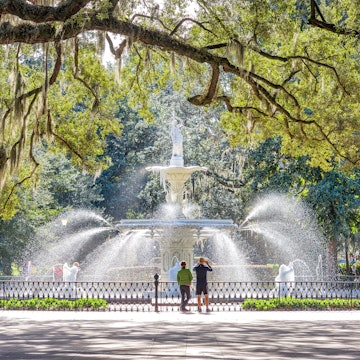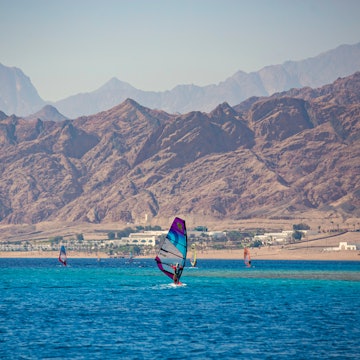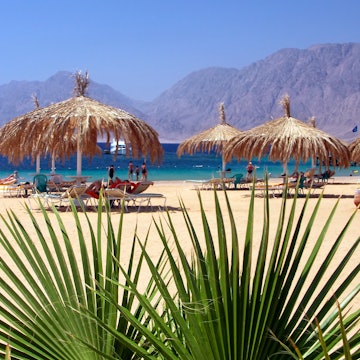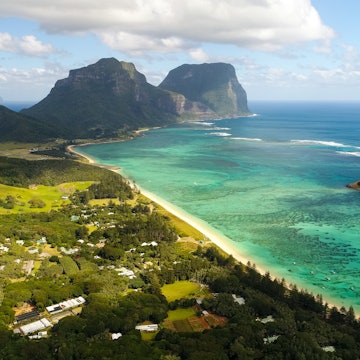

Here's how responsible tourism can have a positive impact on sea turtle populations. Michele Westmorland/Getty Images
The memory of your first sea turtle sighting never fades. Whether it’s a turtle swimming gracefully or hatchlings scurrying toward the sea, these moments linger for a lifetime.
Wherever your travels take you, you’ll come across unique species in stunning environments, each moment showing you just how rich the ocean truly is. But the sense of awe? That’s felt everywhere. These ancient creatures have endured for millions of years, but our actions threaten their survival. Protecting their habitats is crucial if we want future generations to witness these magical moments. Here’s how you can be part of the solution.

Sea turtles are in peril
Of the seven sea turtle species, six are either endangered or threatened, with the Hawksbill and Kemp’s Ridley turtles critically endangered, according to the IUCN. WWF reports that leatherback turtle populations in the Eastern Pacific have declined by 90% in the last 30 years, nearing endangered status.
Bycatch – when turtles are accidentally trapped in fishing gear – is one of the leading dangers to their survival, causing over 250,000 turtle deaths each year, according to WWF. Illegal hunting and the consumption of turtle meat and eggs also continue to shrink populations, with CITES protections undermined by online platforms that facilitate illegal sales.
Climate change intensifies these issues: higher temperatures mean more female hatchlings, and rising seas, severe storms and pollution from plastics and fishing gear continue to damage vital turtle habitats.
These threats affect sea turtles at every stage of their life, from hatchling to adult, making it clear that stronger protections and global efforts are urgently needed to ensure their survival.

Responsible tourism can have a positive effect on sea turtle populations
Tourism can be a double-edged sword for sea turtles. On one hand, coastal development disrupts turtle nesting by pushing them to other beaches, altering habitats and polluting their environment. As more people flock to the coast, recreational activities add clutter, blocking turtles and trapping hatchlings. Waste like plastic and fishing gear ends up in the ocean, where turtles can get tangled or ingest it.
But when managed responsibly, tourism can make a real impact. Biologist Col Limpus remembers how early visitors at Mon Repos Beach in Queensland, Australia, disturbed hatchlings due to a lack of education. In 1994, the Nature Conservation Act protected turtles under the Queensland Parks and Wildlife Service (QPWS), and Woongarra Marine Park was established to safeguard Mon Repos' turtle population. The newly established Turtle Sands eco-resort collaborates with the Mon Repos Turtle Centre to educate guests on responsible turtle watching and provide hatchling viewings, all while raising awareness for the beloved loggerhead turtles.
Ecotourism ventures like Turtle Sands help finance programs that benefit sea turtles and their surrounding communities. Funds are allocated to local guides, conservationists and beach protection efforts, while tours educate visitors and encourage support for turtle conservation.

Here's how tourists can help
Keep a safe distance from nesting turtles and avoid shining bright lights near the beach at night.
Avoid buying souvenirs made from turtle shells, leather or other parts to combat poaching. Here’s how to identify turtleshell.
Choose eco-friendly tour operators that don’t disturb turtles during hatchling viewings or snorkel excursions.
Use reef-safe sunscreen to protect sea turtles and their habitats.
Avoid touching or chasing sea turtles while snorkeling or diving.
Maintain a safe distance from sea turtles when on a boat or kayak.
Stay at eco-friendly hotels that support turtle conservation and minimize nesting site impacts.
Recycle plastic or reuse bags to collect trash on the beach.
Travel in small groups, stay on trails and follow Leave No Trace principles.
Donate to or volunteer for local turtle conservation programs.

6 of the best places to see turtles in the wild
1. Mon Repos, Australia
Looking to get up close with loggerhead turtles? Mon Repos Beach in Bundaberg, Queensland, is home to the largest nesting population of these endangered turtles in the South Pacific. Stay at Turtle Sands, tucked right behind the dunes, for easy access to the beach. From November to March, take part in a Turtle Encounter Tour with a Parks Ranger, starting at 6:30pm each evening. For even more turtle encounters, Bundaberg is your gateway to Lady Elliot Island, where you can spot green, hawksbill and loggerhead turtles.
Planning tip: From January to March, adult turtles come ashore to lay their eggs, but you can also watch hatchlings make their way to sea from January to March.
2. Tetiaroa, French Polynesia
Tetiaroa, a 7-sq-km (3-sq-mile) atoll in French Polynesia, is one of the world's few undisturbed green sea turtle nesting sites. Guests of the Brando Resort have the rare chance to observe turtle hatchings, thanks to the resort's partnership with Te Mana e Te Moana, a conservation group managing turtle efforts on the island. When the resort was being built, staff worked with Dr Cécile Gaspar to ensure the villas were placed away from vital nesting areas, allowing guests to witness hatchings with Tetiaroa Society guides. Join a nature and culture tour to learn about Tetiaroa’s flora, fauna, cultural history and sustainable living practices.
Local tip: Dr Gaspar recommends visiting between November and January for the best chance to see turtles hatch, usually around 4–6am.

3. Jekyll Island, Georgia, USA
Located on Georgia's coast, Jekyll Island is a popular nesting spot for loggerhead turtles from May to October. Visitors can experience a turtle hatching on a guided Turtle Walk and take a behind-the-scenes tour of the Georgia Sea Turtle Center’s hospital to learn about turtle care. Early risers should join the turtle patrol at dawn to assist researchers in monitoring and cataloging nests around the island. You don’t have to join a tour to spot turtles – with 16km (10 miles) of public shoreline, you're likely to see one on the beach. Just be sure to respect their space and avoid disturbing them.
Planning tip: The turtle center advises purchasing admission online in advance, especially during turtle season from May to October.
4. Red Sea, Egypt
Egypt isn't just about the pyramids – its Red Sea is a prime spot for olive ridley, green and hawksbill turtles. Turtles Beach in the shallow Abu Dabbab Bay is renowned for its giant sea turtles grazing on seagrass. Experienced divers swear by Marsa Alam as the best place to encounter green and hawksbill turtles, and other marine animals like dugongs. June to September is the ideal time to see them, as it's when they nest and hatch, but turtles can be spotted just about every day.
Planning tip: Visit Turtlewatch Egypt to track turtle sightings from biologists and snorkelers, or even adopt a turtle yourself.

5. The Galápagos Islands
For many, the Galápagos Islands are a dream destination brimming with turtles, unique ecosystems and volcanic landscapes, yet challenging to navigate solo. Joining a guided tour like Intrepid Travel's 8-Day Galapagos Island Hopping is the easiest, responsible way to witness the magnificent green turtles. For those interested in conservation, See Turtles runs volunteer trips where participants can snorkel, join a turtle photo ID project, work with tortoises and help clean the beaches.
Planning tip: Plan your trip during the dry season (June to November) for optimal visibility. November and December are the warmest months, while March and April see the least rainfall.
6. Bunaken Marine Park, Indonesia
Bunaken, in northern Sulawesi, Indonesia, is a biodiversity hot spot where divers can encounter up to 20 turtles in one dive, especially near the famous "Muka Kampung" (Turtle City). With strong currents and vibrant schools of fish, the dive is thrilling, and larger marine creatures occasionally join the scene. Guests of 3Will Bunaken Dive Resort have easy access to several dive sites, including Turtle City, through the onsite dive center.
Planning tip: The park's sheltered location allows for year-round diving, but the best conditions are during North Sulawesi's dry season (March to November).














